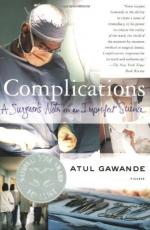|
This section contains 361 words (approx. 1 page at 400 words per page) |

|
Final Cut Summary and Analysis
In "Final Cut," Gawande discusses a procedure that is only performed when no other treatment was successful—the autopsy. An autopsy, based on Gawande's description, is a vastly different experience compared to surgery— - from the moving and repositioning of the body, the size of the incision, and even the manner in which one wields the scalpel. For doctors, an autopsy sometimes brings the fear that a mistake will be revealed and sometimes brings the relief that the outcome was inevitable rather than human-based.
For much of history, many religions protested autopsies, and those that are accepting of them are usually only for legal reasons. In those times, bodies were sometimes stolen from graves. By the turn of the 20th century, doctors had effectively turned autopsies into tools of discovery—uncovering new diseases such as tuberculosis...
(read more from the Final Cut Summary)
|
This section contains 361 words (approx. 1 page at 400 words per page) |

|




